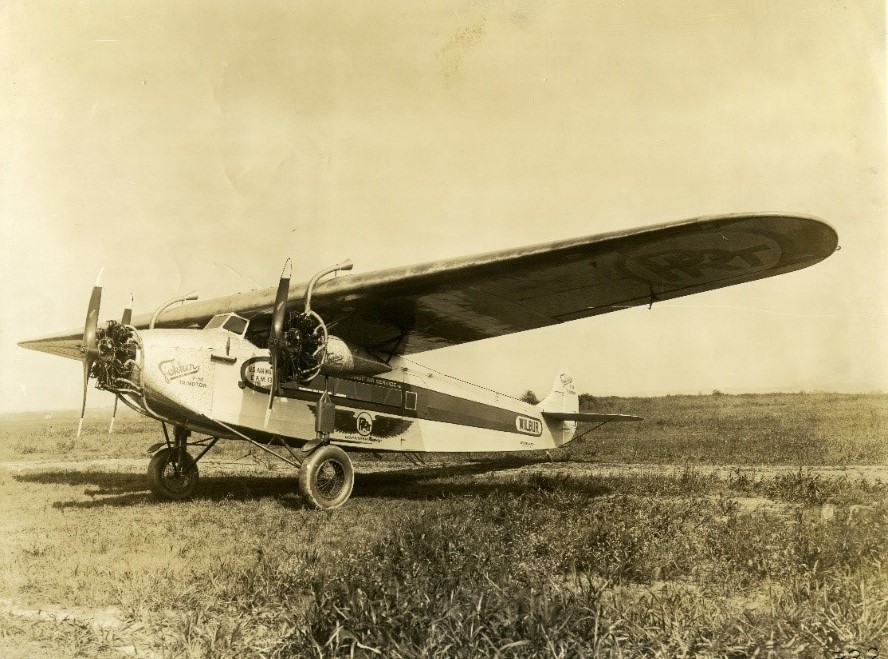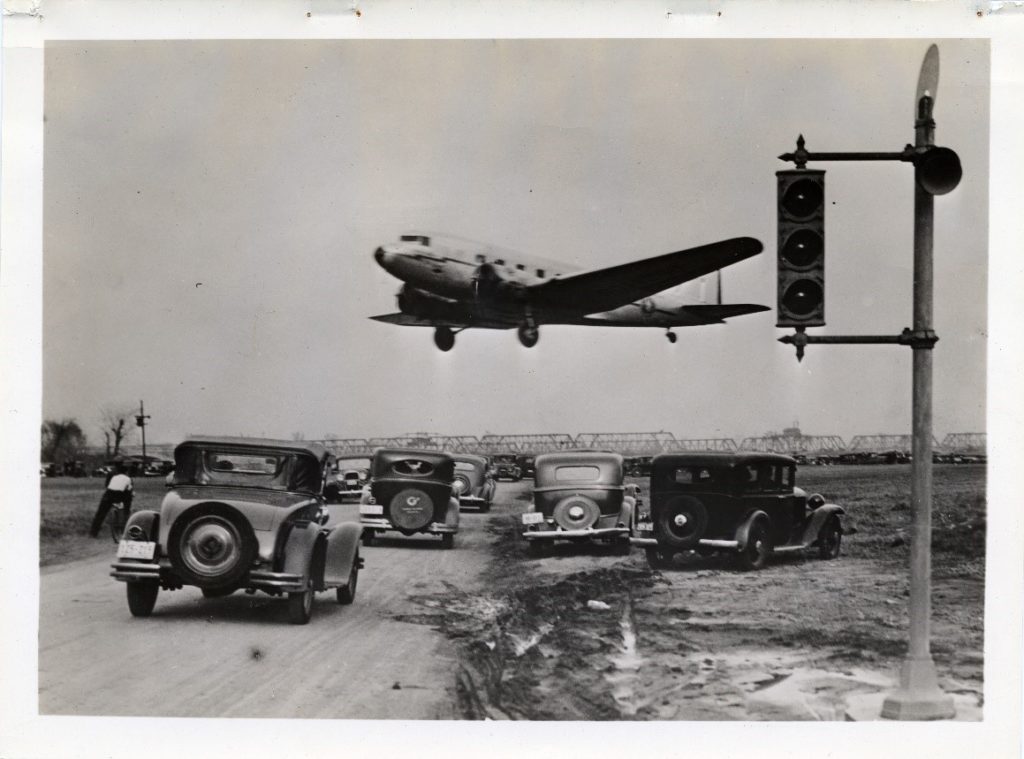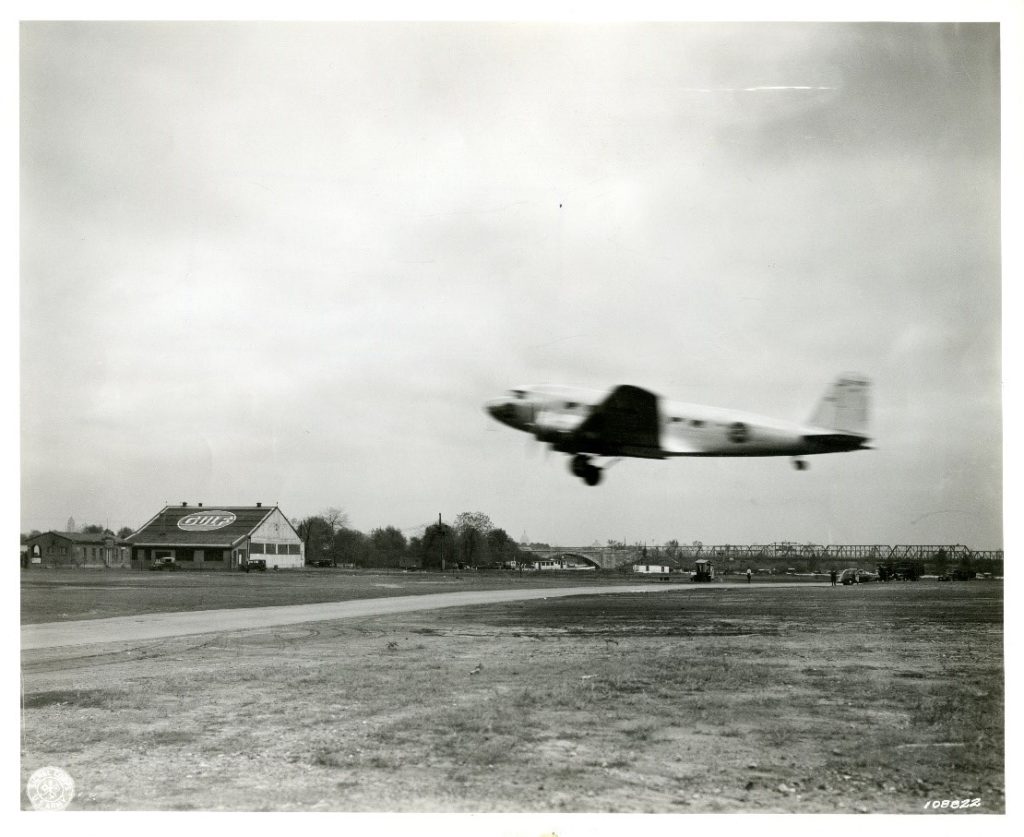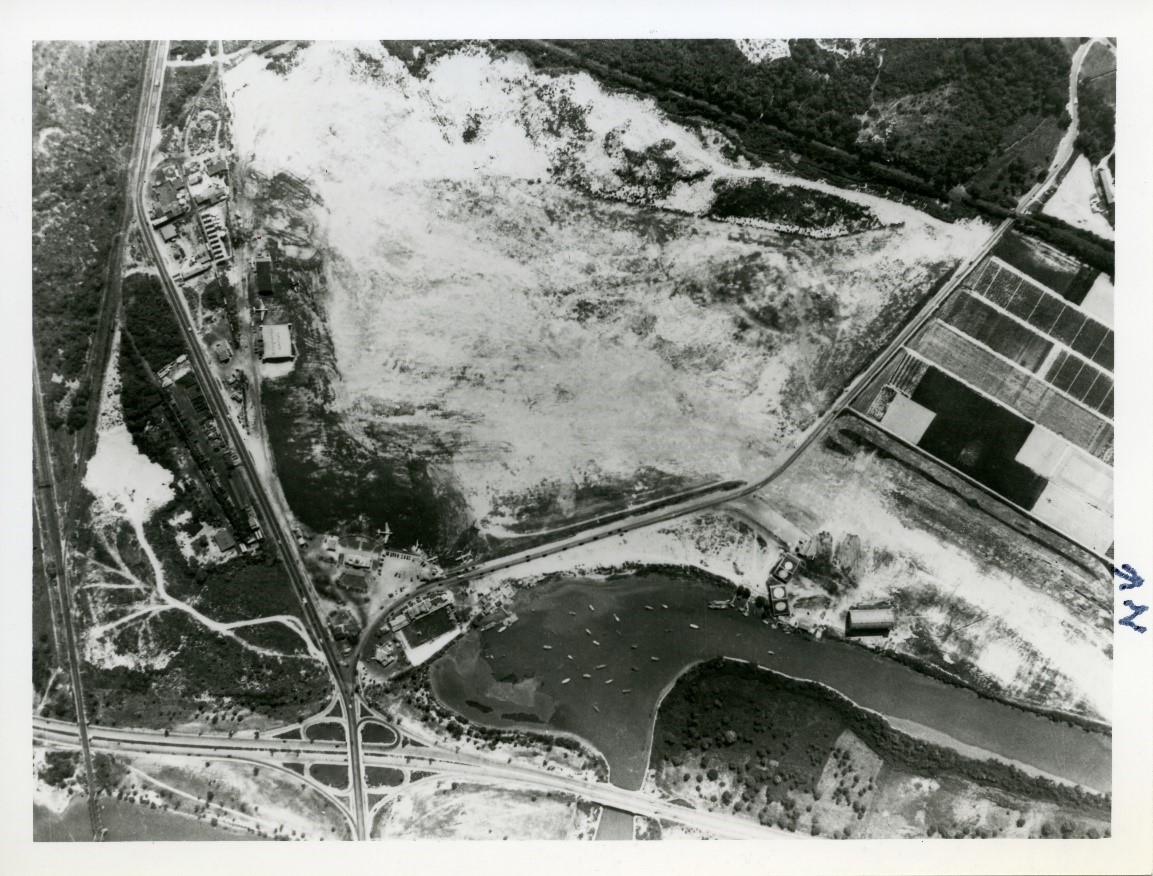In 1925, Thomas Mitten, head of the Philadelphia Rapid Transit Company, sought to begin daily passenger flights between Philadelphia and Washington, D.C. as part of the 150th celebration of the Declaration of Independence.
Finding no appropriate airfield in the District, Mitten selected a new site in Arlington to build an airfield, at the present-day site of the Pentagon. The land was just large enough for a single runway and a small hangar.
Plane flying over Military Road to land, 1935
On July 16, 1926, 150 years after the signing of the Declaration, the airfield was christened Hoover Field (after then-Secretary of Commerce Herbert Hoover) and started passenger and mail air services.
Herbert Hoover (4th from left), Secretary of Commerce, at the opening of Hoover Field with one of the three Fokker Planes of PRT Flights to Philadelphia Sesquicentennial Expo, July 16, 1926.
Hoover Field quickly became known as one of the most dangerous airfields in the country. Multiple problems plagued the field including a major road—Military Road— that ran along the east side of the field, poor visibility from the nearby landfill that burned trash, and a site that was too small to viably hold an airfield.

Fokker F-VII Trimotor "Wilbur," operated by the Philadelphia Rapid Transit Air Service between Philadelphia, Washington, and Norfolk, VA for transportation of mail, freight, and passengers at Hoover Field, 1926.
In 1927 a second airfield named Washington Airport opened on land directly adjacent to Hoover Field. The two airfields operated jointly for a time and in 1933 they merged under the name Washington-Hoover Airport.
Washington-Hoover Airport did not yield better safety results than Hoover Field, as they had a reputation of having the poorest aviation ground facilities of any major city in the United States.
Military Road now ran between the two airfields, so airport management attempted to stop traffic on the road to allow planes to land and take off, but were fined by county officials for obstructing traffic. It took a congressional act to allow the airport to install traffic lights, but even with these lights, the road caused dangerous and confusing conditions for both pilots and drivers as seen in the first photograph.
Eventually Military Road was rerouted around the airport.
Washington-Hoover Airport remained open until 1941. With the opening of the much larger Washington National Airport (now known as Ronald Reagan Washington National Airport), Washington-Hoover was no longer needed. The land was purchased by the United States Department of War, and became part of The Pentagon’s grounds.
To learn more about Arlington's history, visit the Center for Local History on the first floor of the Central Library.
Do you have a question about this story, or a personal experience to share?
Use this form to send a message to the Center for Local History.
Center For Local History - Blog Post Message Form
Do you have a question about this story, or a personal experience to share? Use this form to send a message to the Center for Local History.
"*" indicates required fields



